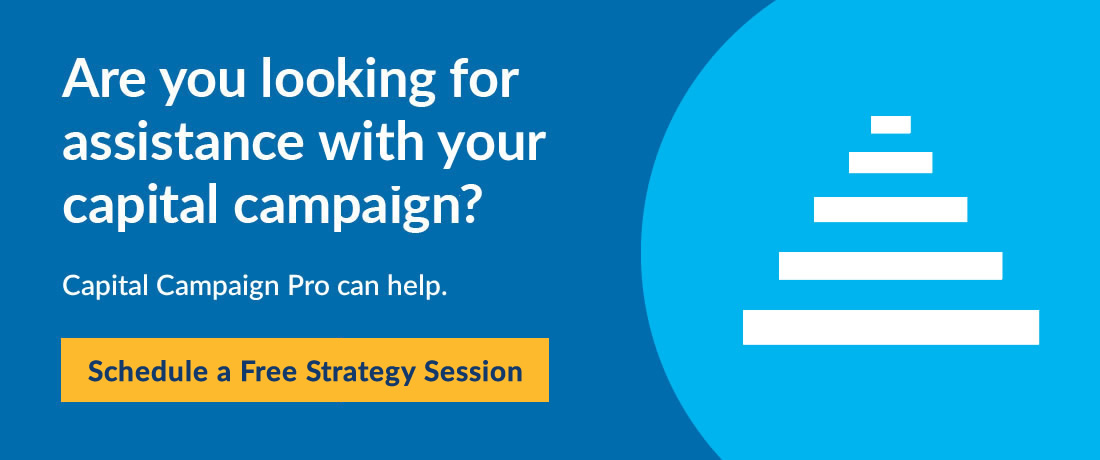Use the Public Phase of Your Campaign to Energize Your Community

After a long and often arduous quiet phase, during which your campaign will raise 60% to 80% of your campaign goal, you will finally kick-off the public phase of your campaign.
Prior to your campaign kick-off, you’ll have solicited all your largest donors and those people closest to your organization. In a typical campaign, you’ll have received gifts from between 30 and 50 people during the quiet phase (which total 60-80% of your campaign goal).
During the campaign’s quiet phase, you’ll talk about the project you’re raising money for publicly, but you won’t announce the campaign goal, except to those you’re asking for gifts.
The public phase of the campaign begins when you announce the goal and continues until you reach that goal.
When you’re ready to launch the public phase, you’ll announce your campaign goal to the public and set about raising the rest of the money you need — and for that, you’ll need to build excitement!
Need help determining the perfect time to go public? Request a free strategy session to talk with a capital campaign expert.
Capital Campaign Public Phase: 7 Questions and Answers
At Capital Campaign Pro, we often field questions about the public phase, and how and why it matters to your organization. Here are the seven most commonly asked questions.
1. What’s the purpose of the public phase?
The public phase serves to build interest and excitement about your project, your campaign and your organization throughout the community, in addition to raising the final dollars to achieve the goal.
The publicity of the public phase makes the people who have worked hard on the campaign in the early phases feel gratified to see the results of their hard work become visible. And this phase capitalizes on the success of the campaign to draw other people in.
Low level annual donors, for example, will be motivated to give a special campaign gift over and above their annual contributions. And community members who may know of the organization but not yet be donors may become inspired to get involved and contribute.
In summary, the public phase serves three purposes:
- It recognizes the work and contributions made during the early phases.
- It inspires people who are current lower-level annual contributors to give.
- It calls attention to the organization’s success to the wider community of donors.
2. When should we kick-off the public phase of our campaign?
The public phase of your campaign should be announced when you have solicited most of the largest gifts and have a clear sense of what the actual, published campaign goal should be. For most campaigns, this means the public phase starts when approximately 70% or even more of the campaign goal has been reached.
The determination of how much money should be raised (before going public) varies, depending on the breadth of the organization’s donor base and its potential to raise funds from the broad base.
For example, the smaller your donor base (like a small school), the more you will need to raise before going public because your ‘public’ is very limited.
3. How long should the public phase of our campaign take?
The more visibility and excitement you can build through the public phase of your campaign, the better. It’s difficult to maintain that kind of excitement for very long, so we advise that the public phase of the campaign be no longer than 3 months.
4. What communications should we plan on during the public phase?
Many organizations have a special campaign newsletter to help spread the word about the campaign and to build enthusiasm. This newsletter might start with an issue that covers the campaign kick-off and then publishes an issue every 4 or 6 weeks during the public phase.
Organizations with a community-wide reach might go so far as incorporating newspaper ads, billboards, and other paid ads on social media.
The public phase is also a time for campaign ‘swag’ that might include hats, buttons, and t-shirts.
5. Can we recruit special leadership for the public phase?
If the chairs of your campaign are not eager to preside over the public phase of your campaign, you can recruit additional leaders to step up during that phase who are comfortable taking the spotlight.
Should you decide do that, be sure to give your other campaign chairs ample appreciation even if they are not the ones in the spotlight.
6. What are the most important strategies we should use for the public phase?
Traditional campaigns often included direct mail and phone-a-thons in the public phase. Today, however, many organizations have widened their approaches to include online fundraising initiatives.
Consider asking a special donor to establish a challenge or matching gift to add excitement and leverage during this phase of the campaign.
7. How can we keep the energy high if construction won’t start for months?
Some organizations complete their campaigns months before the project itself is ready to get started. If that’s the case with your organization, you should develop a schedule of events to build energy and enthusiasm during that period.
You might establish a second challenge, for example. Or, you can organize smaller events to give people information about the project and what it will accomplish in the community.
Regardless, be sure you communicate with the people who have contributed so they are up to date about the project/construction schedule. And when the ground-breaking does finally happen, invite donors for a wonderful celebration.
Broad Community Support via the Public Phase
The public phase of your campaign takes a lot of planning and energy and resources. And though you won’t raise a tremendous amount of money, you’ll do something just as important — you’ll energize a broad community of people and motivate them to get involved.
Few things are as motivating as the prospect of success. So with your campaign’s success assured, your public phase will invite a broader community to take part in the fun and work with you to get you over the goal of your capital campaign.




Congrats to your client, Andrea. Great post.